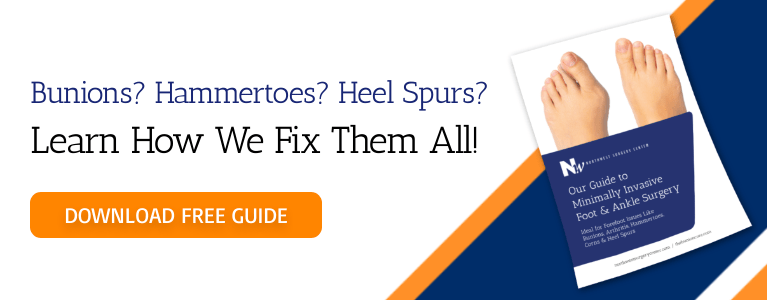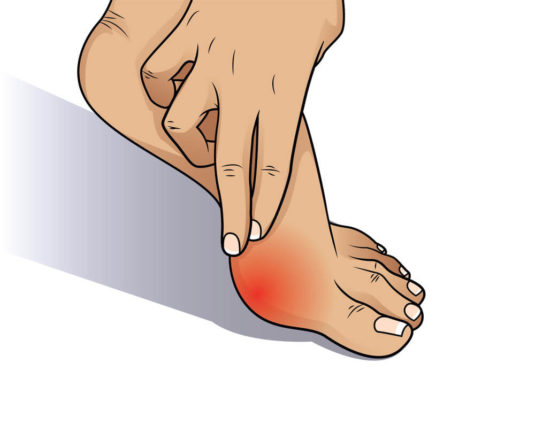As one might imagine, relatively few people are excited –– or even comfortable –– choosing to have surgery if they can avoid it. Many assume that procedures like bunion surgery will be painful, inconvenient, and costly (even though that’s not true). So it’s probably not a surprise that a significant number of people try out ineffective, non-surgical methods to deal with bunion pain before they opt to go under the knife. However, the only way to get rid of a bunion is to have it surgically removed. The good news is that bunion surgery pain is rarely a big issue for our patients. That’s mostly due to advancements made in minimally invasive surgical methods. We’ll explain further here:
Bunion Surgery 101
There are many different types of surgeries designed to address bunion pain. Some involve a readjustment of the foot muscles, or the removal of a piece of a foot joint to ease pressure on the bunion. Others, though, involve the complete removal of the bunion from the foot. Such procedures are known as bunionectomies. While bunionectomies in the past were effective, they were far from perfect procedures. Traditional bunion surgery was often painful and could cause numerous complications.
Traditional Bunion Surgery vs Minimally Invasive Bunion Surgery
During a traditional bunionectomy, the surgeon makes a large incision along the side of the foot in order to remove the bunion. Depending on the size and severity of the bunion, the surgeon may also need to insert metal screws and other devices to hold the new structure of the foot together. Traditional bunion surgery often forced patients to spend several days off their feet completely. And traditional bunion surgery also calls for the use of general anaesthesia. Many patients experienced large scarring along their feet after traditional bunionectomies. In addition, many also suffered from residual pain for six months or more following the procedure.
By contrast, minimally invasive bunion surgery is much more patient-friendly. For one, the surgery involves much smaller (minimally invasive) incisions. Modern surgeons can usually remove a bunion using only very small, several-inches-long incisions. What’s more, the procedure requires only local anesthesia. This means that while the patient’s foot will be numbed throughout the process, they won’t lose consciousness. As a result, most patients who undergo minimally invasive surgery are able to walk out of the operating room under their own power and drive home afterward. Scarring, recovery time, and residual pain are also greatly reduced when compared to traditional surgical methods. Virtually all patients who have minimally invasive bunion surgery are back to full, pain-free fitness within five weeks. However, many more return to normal activities much sooner and only have to wear a postoperative shoe for additional support during that time.
Is Minimally Invasive Bunion Surgery Right for You?
If you suffer from bunions, then minimally invasive surgery is an option you should absolutely consider further. Bunions do not get better on their own, and over-the-counter products like bunion splints and pads offer little more than short-term pain relief. Remember that minimally invasive bunion surgery is safe, convenient, highly effective, and much less painful than other ways of dealing with bunions.
Contact Us
At Northwest Surgery Center, we have years of experience working with patients to alleviate foot pain issues and bunion surgery pain. We’re experts in the field of minimally invasive surgery and we can help you get back to living your life pain-free. Contact us here for more information or to schedule an appointment ASAP.
To learn more about bunion surgery pain or to inquire about getting a bunionectomy, contact the experts at Northwest Surgery Center or download our free “Guide to Minimally Invasive Foot & Ankle Surgery”!




Leave A Comment